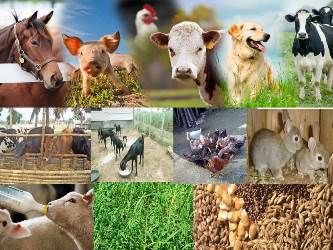



Received: 28-Nov-2022, Manuscript No. GJASLPAB-22-84103; Editor assigned: 02-Dec-2022, Pre QC No. GJASLPAB-22-84103 (PQ); Reviewed: 16-Dec-2022, QC No. GJASLPAB-22-84103; Revised: 23-Dec-2022, Manuscript No. GJASLPAB-22-84103 (R); Published: 30-Dec-2022, DOI: 10.35841/2408-5499.22.10.177
Globally, the livestock industry is very dynamic. The rapidly increasing demand for animal products is transforming in developing countries. The market for cow products is stagnating in wealthy countries, despite the fact that many production methods are evolving to be more effective and environmentally friendly. As human population, income, and urbanization have evolved historically. There is a correlation between improvements in science and technology as well as an increase in the number of animals and the production response in various livestock systems. Productivity will be impacted more and more in the future by competition for natural resources, particularly land and water, rivalry between food and feed, and the need to operate in a carbon-constrained economy. Improvements in breeding, nutrition, and animal health will continue to have an impact on the potential for improved production, increased efficiency, and genetic innovations. It is anticipated that laws governing the environment, animal welfare, and carbon emissions will have a greater impact on the production of cattle. Socioeconomic factors including worries about human health and changing sociocultural values may dramatically temper future demand for cattle products. There is a lot of uncertainty about how these factors will show themselves in different parts of the world during the coming decades.
Livestock systems have both beneficial and negative effects on the natural resource base, human health, social equity, and economic prosperity. One of the agricultural subsectors in emerging nations that is now growing at the highest rate is livestock. It contributes 33%of the agricultural GDP already and is rapidly expanding. The demand for animal products is rapidly increasing as a result of population increase, urbanization, and rising levels of affluence in developing countries. Trends in the consumption of meat and milk in developed and developing countries as a result, variances in the consumption of animal products, particularly between localities, are far greater than differences in the total amount of food available. The dietary demand for animal products will virtually quadruple in sub-Saharan Africa and South Asia, going from about 200 kcal per person per day in 2000 to over 400 kcal per person per day in 2050.
Contrarily, consumption levels in the majority of OECD nations that now consume 1000 kcal or more of animal products per person per day will hardly change, while levels in South America and the former Soviet Union will rise to OECD levels. The most suitable breed or breed cross can be determined using the standard techniques of selection among breeds or crossings, but further improvement can only be achieved through selection within the population. Cross-breeding, which is common in commercial production, uses the heterosis or hybrid vigour as well as the complementarity of several breeds or strains. In regard to the mean of the single or multiple qualities that are of interest, selection within breeds of farm animals often results in genetic changes in the range of 1–3% every year.
Such rates of change have been achieved in practise during the past few decades in breeding programmes for pigs and chickens in a number of nations as well as dairy cattle in nations like the USA, Canada, and New Zealand, mostly because to the actions of breeding firms. In national populations of beef cattle and sheep, rates of genetic change are frequently much lower than what is theoretically achievable. The majority of nations have widely distributed ruminant breeding, making sector-wide development difficult.
For a variety of reasons, including the expanded use of technology like artificial insemination and the greater emphasis on selecting for objective traits like milk yield, rates of genetic change have increased in recent decades in most species in developed countries. Dairy cattle have made less progress than poultry and pigs, especially in affluent nations and in certain developing nations with highly industrialised production systems. Some of this has been achieved through the widespread use of breed substitution, which tends to lead to the predominance of a few highly specialized breeds, within which the genetic selection goals may be narrowly focused.